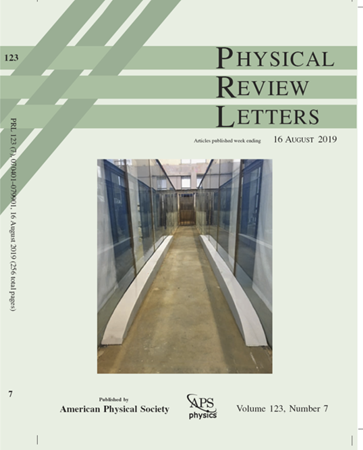Transitional Supersolidity in Ion Doped Helium Droplets
IF 8.1
1区 物理与天体物理
Q1 PHYSICS, MULTIDISCIPLINARY
引用次数: 0
Abstract
He4 nanodroplets doped with an alkali ion feature a snowball of crystallized layers surrounded by superfluid helium. For large droplets, we predict that a transitional supersolid layer can form, bridging between the solid core and the liquid bulk, where the离子掺杂氦液滴的过渡超固态
掺杂碱离子的He4纳米液滴具有被超流氦包围的结晶层雪球的特征。对于大液滴,我们预测可以形成过渡超固体层,在固体核和液体体之间桥接,其中He4密度表现出二十面体群对称的调制。为了识别不同的相位,我们将密度泛函理论与局部多体系统的半经典高斯时变Hartree方法相结合。这种混合方法可以处理大粒子数,并提供了对超固体层的物理起源的见解。对于小液滴,我们验证了我们的方法的预测与路径积分蒙特卡罗计算非常一致。2025年由美国物理学会出版
本文章由计算机程序翻译,如有差异,请以英文原文为准。
求助全文
约1分钟内获得全文
求助全文
来源期刊

Physical review letters
物理-物理:综合
CiteScore
16.50
自引率
7.00%
发文量
2673
审稿时长
2.2 months
期刊介绍:
Physical review letters(PRL)covers the full range of applied, fundamental, and interdisciplinary physics research topics:
General physics, including statistical and quantum mechanics and quantum information
Gravitation, astrophysics, and cosmology
Elementary particles and fields
Nuclear physics
Atomic, molecular, and optical physics
Nonlinear dynamics, fluid dynamics, and classical optics
Plasma and beam physics
Condensed matter and materials physics
Polymers, soft matter, biological, climate and interdisciplinary physics, including networks
 求助内容:
求助内容: 应助结果提醒方式:
应助结果提醒方式:


